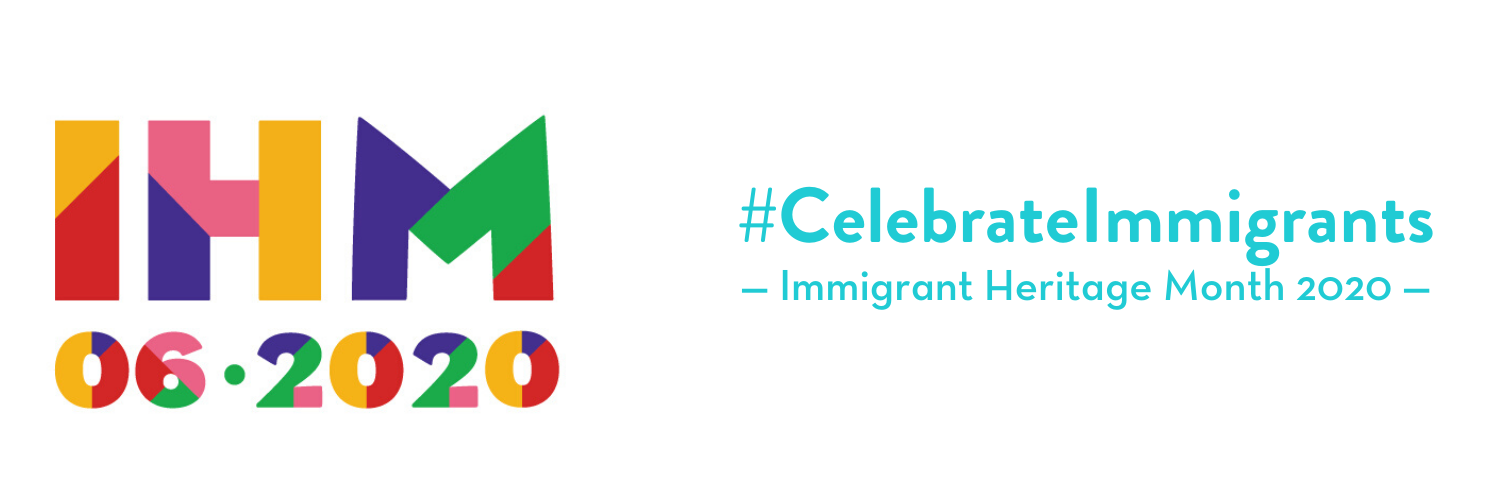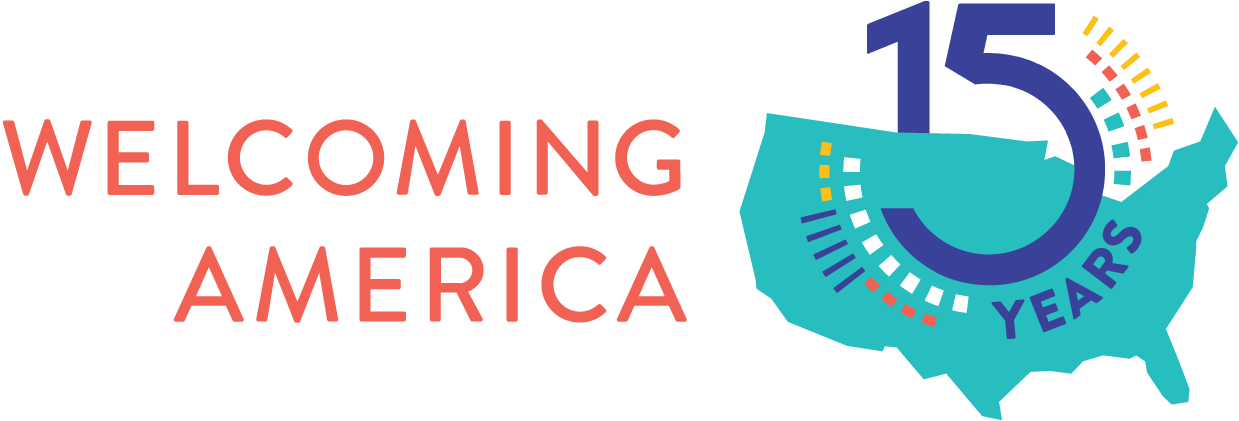
Immigrant Heritage Month 2020: Stories of Welcoming
Immigrant Heritage Month celebrates the stories of immigrants and those with immigrant heritage. In this post, Welcoming America staff share their experience with immigration and/or their immigrant heritage.
What is your experience with immigration?
“With my family’s story as the backdrop, my personal and professional networks have always included friends and colleagues with diverse immigration experiences whose lives have shaped mine. One influential experience early on was seeing my mother become the first Spanish-speaking family liaison in our school district. Her bridging position helped advance a school culture of inclusion — vastly different from the sink-or-swim approach she experienced learning English as a child. The power of that single institutional investment is a lesson I’ve carried forward” – Christina P.
“I was born in the U.S., but my parents are immigrants from South Korea. I also have many friends and colleagues from other countries, and through them, I’ve seen the vastly different sides of the immigration system, from those who arrive with professional visas, to those with no documents.” – Lola P.
“Growing up in a border state, immigration was constantly discussed on the news and around the dinner table. Many of my classmates growing up came from immigrant families, and they were always some of the most hardworking students. Growing up in an immigrant-heavy community allowed me to learn new things about different cultures and hear stories I never would have heard otherwise.” – Sydney H.
“My family, some very recently, came as immigrants to the U.S. My mother and grandparents arrived as refugees from the Holocaust in the 1940s. My ancestors from many generations before them were also forcibly displaced. To be Jewish is to constantly revisit these stories of exodus, and for me personally, to find the deep connections between them and the experiences of people of all races, creeds, and origins. Whether our story is recent or ancient, we all seek a place to call home where we can feel safe and at peace with our neighbors.” – Rachel P.
What does the term “immigrant” mean to you? What does it mean to be an immigrant?
“In biology, an immigrant is a living being that has migrated to another region. It’s a natural occurrence, and part of what produces the extraordinary biodiversity that makes our world so wondrous. People have been migrating since the beginning of time, and whether by will or forcible displacement, their journeys have shaped our history, as have the encounters—welcoming or not—that they’ve received. As climate change displaces more people, my hope is that we’ll find new ways to see migrants not as “other” but as “us.” That will be key to the success of inclusive democracies everywhere. The alternative path is what we are witnessing in the U.S. right now in the pursuit of equality for individuals who have migrated, were enslaved, or were removed from their native lands. When people who move can choose to stay or to make a home in a new place and enjoy the same rights and sense of belonging as any one of us, our mission at Welcoming America will be fulfilled.” – Rachel P.
“There is a Finnish term my family likes to use called sisu – it means stoic determination, tenacity of purpose, grit, bravery, and resilience. I always associate the term “immigrant” with sisu. Leaving what you know behind in search of a better life is not easy – you have to be adaptive, resilient, and hardworking, and I think that takes a lot of courage.” – Sydney H.
Everyone has an immigration story or knows someone who is an immigrant. Help us celebrate by sharing your story or journey
“On my father’s side, my grandparents made their lives in Cleveland, OH after moving from and between Romania, Cleveland, and Erie, PA. On my mother’s side, my grandfather came to Bridgeport, CT from Portugal, and after he fought in WWII and became a U.S. citizen, my grandmother was able to join him. Through time more of my extended family has come to the U.S. from Portugal as well. One piece of this journey that makes me who I am is that my step-grandmother mainly spoke Portuguese and I mainly spoke English growing up, so we got creative communicating across languages. Later in life I got to connect with her in a new way when I learned Portuguese.” – Christina P.
“Although my mother has lived in the U.S. for over 30 years, she only obtained her citizenship in 2013. Initially, it seemed more of a bureaucratic formality, as there were no dramatic changes in her day to day life. Years later, though, she shared with me how bittersweet it was for her to renounce her South Korean citizenship to finally become an American. I realized then that it was an emotional journey for her the entire time, and even though I couldn’t relate, I understood more deeply the impact of citizenship on one’s identity.” – Lola P.
“My family comes from a long line of Finnish immigrants. My great-grandfather emigrated to America in the late 19th century from Finland through Ellis Island at 21years old. Every year, we celebrate our Finnish heritage by making classic Finnish dishes like cloudberry pie and wearing purple on St. Urho’s day.” – Sydney H.
“I’d like to use this space to recommend, especially for those working on immigration, reading Isabel Wilkerson’s The Warmth of Other Suns, and exploring the journeys and stories of the Great Migration. And then, if you’re still curious to know my story, you can get to know the survival and journey of my grandmother.” – Rachel P.
How does your family or community celebrate #BeingWelcoming?
“#BeingWelcoming starts with feeling safe and coming together on equal footing with people you might not encounter otherwise, to build a relationship and ultimately, build a community together. One particular experience that comes to mind was some years ago through a local leadership group that I was active in. Many communities have these leadership programs, but they aren’t always deliberately focused on expanding the idea of who a leader is and making sure that circle grows to encompass people who aren’t traditionally at the table. My leadership group had met every year at a local church to discuss the community’s growing diversity, but it wasn’t until we decided to go across the street (literally, in this case) to meet with religious leaders at the mosque that the conversation – and the experience – deepened. Those relationships and the questions raised in a conversation set the stage for other positive changes, and the chain continues. But the first act of #BeingWelcoming started with the idea and the welcome that the mosque leaders gave their peers.” – Rachel P.
“I love introducing people to Korean barbecue and Korean-style sushi dinners, which differ from Japanese sushi in types of seafood and scale of side dishes (quite the opposite of minimal!) Korean food is so communal, it is one of the best ways to make others feel welcome in our community.” – Lola P.
“An important part of welcoming is learning about other people’s experiences and drawing connections to our own lives, building the empathy and consciousness that drives us to show up for one another – whether that’s checking on a friend during the coronavirus pandemic or working for policy change. My family has a culture of storytelling that celebrates our history and reminds us of our interdependence. Part of that is also sharing stories from our networks and what we’re reading. A few great reads on migration -including forced – I recommend are Americanah by Chimamanda Ngozi Adichie, Life Behind the Lobby: Indian American Motel Owners and the American Dream by Pawan Dhingra, and Homegoing by Yaa Gyasi.” – Christina P.
If you have a story that celebrates immigrants and immigrant heritage, we’d love to hear from you. Contact us at [email protected].

